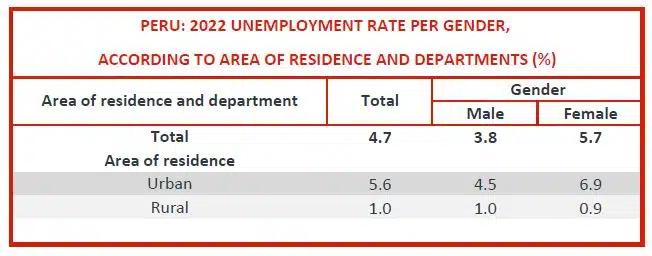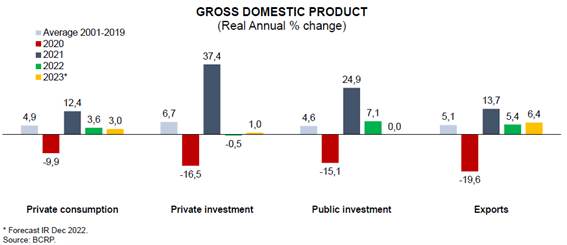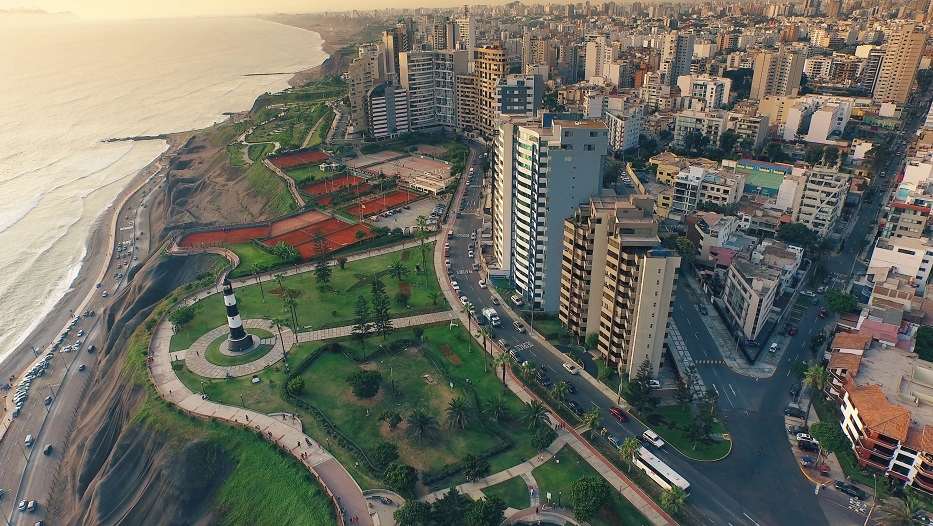After 30 years in the insurance industry, specifically in the sales area, our colleague Julián Vidal has landed his new job position as Director of Global Business Development.
Below, he gives us a macro- and micro-overview covering the prospects of the Peruvian market.
The Republic of Peru covers an area of 1.2 million m2; it has more than 33 million inhabitants, of which 30% is concentrated in Lima. GDP per capita is $6,621.57; for its part, the unemployment rate in 2022 closed at 4.7% nationwide, according to the report published in June 2023 by the INEI (National Institute of Statistics and Information Technology). Peruvians are recognized as hard-working, active and creative people, but also for being highly informal on the job market, so much so that the informality rate exceeds 73%.

With regard to the evolution of the market at the end of 2022, public investment is expected not to grow due to the entry of new authorities, both presidential and regional and municipal. Private investment could contract by 0.5% in 2023 due to the absence of large projects, including mining, and lack of a fixed direction in the country over the last few years.
Likewise, in this global context in which worldwide inflation is through the roof, Peru has not been the exception: while in April we estimated it at 8.46%, currently we are around 5.6%. Despite this data, inflation from 2000 onward has been very stable, meeting the target ranges established by the World Bank and enjoying macroeconomic stability that was only affected by the pandemic and its effects on global and local markets.
Today we enjoy a certain stability and calm, the same that is reflected in the monthly inflation, which is redirected and marks a trend that brings us closer to the target range, between 1% and 3%, to which it is estimated to return at the end of 2023 or the beginning of 2024.

Strengths and threats
Our currency, the Peruvian sol, is one of the strongest in Latin America (1 sol = $0.27). The independence of the Central Reserve Bank, established in the 1990s after suffering hyperinflation, generates solid bases for growth despite constant political crises. As an example, in the last five years Peru has had six presidents. Today, the first female president, Dina Boluarte, has serious human rights-related complaints against her for the events of December 2022, after assuming command following the failed self-coup of the state of Pedro Castillo.
Peru is immersed in the Pacific Ring of Fire, a region with very high exposure to earthquake risk. Specifically, Lima’s seismic activity has been silent for almost 50 years, so an event of high magnitude is expected at any time. Likewise, the Peruvian coast is periodically affected by the phenomena of El Niño and La Niña, reverse phenomena that lead to flooding and droughts, respectively. During the months of January and February we went through Cyclone Yaku, an unexpected and unusual phenomenon that affected the country’s northern coast with rains that surpassed historical records.
Its widespread, diverse climates, strategic location and extensive coastlines make Peru a great producer of raw materials and services. The mining and agriculture sectors grow 32% and 36%, respectively—61% of exports are from mining products—and manufacturing declines to up-to-date values. The services sector went from 39% to 46% of GDP.
Based on the country’s performance by sector:
• Agriculture is the traditional economic activity, though in the past decades, it has been modernized and focused on specialized crops such as blueberries, asparagus or avocados. They have great relevance for exports.
• Mining is heavy (we are among the main producers of gold, zinc, lead and tin).
• Manufacturing: It must be said that it has not grown noticeably in recent years due to a low drive to local industry and the difficulty of competing with imports from specialized markets.
• Fishing: Despite having a huge variety of marine resources, the recent and long bans due to high sea temperatures as well as predatory behavior to manufacture fish meal (of which we were the top world exporter) make production limited and basically remain in the local market.
Challenges
As stated by other INEI studies, with 2023 data, the increase in the country’s productive activity was 0.31% was to positive results mainly in the Mining and Hydrocarbon, Trade, Lodging and Restaurants, Transport and Electricity. However, on this occasion the Agricultural, Telecommunications, Financial, Manufacturing, Construction and Fishing activities did not yield the desired results. Certainly, the weather conditions that we have gone through with the presence of El Niño have not made it easy.
And to conclude, a country like Peru, three times larger in area than the UK, has all the elements to power renewable energy. Electricity production grew by 8.4% when compared to the same month in 2022, thanks to thermal generation and the increase in wind, while hydraulic power generation and solar power decreased.

Julián Manuel Vidal Gutiérrez
Head of Global Business Development – MAPFRE Peru




